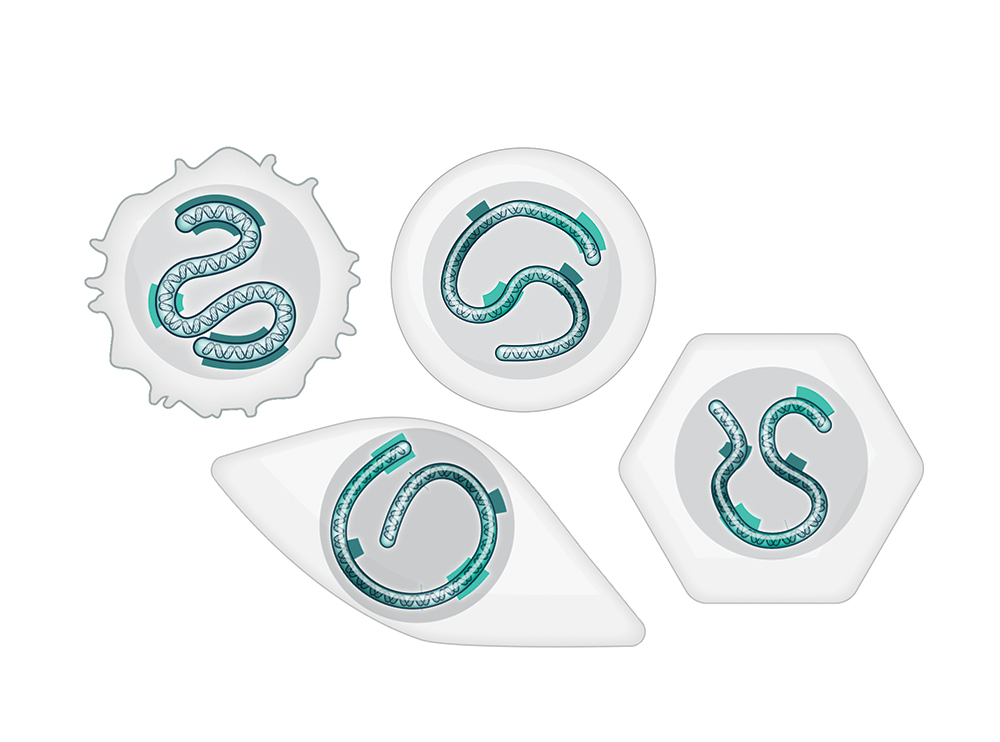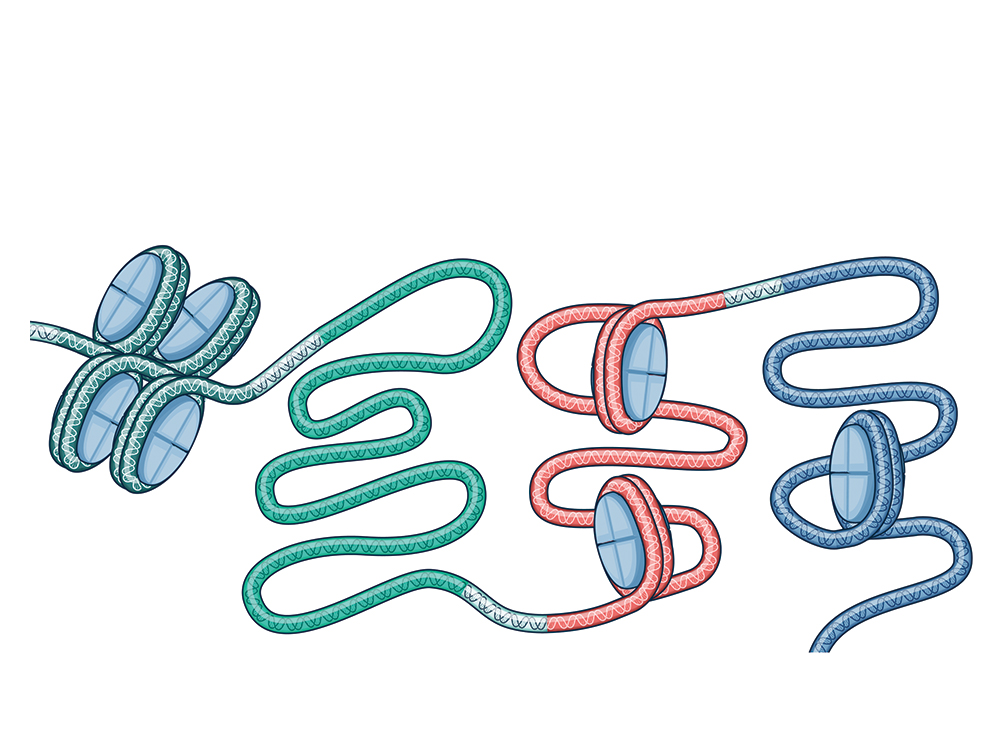Advantages of Tuning with TEMPO
The TEMPOTM platform confers several marked advantages over those of nuclease-based gene editing and related modalities. Chief among these are:

Regulating Genes in Their Natural Context
Although powerful, genetic tuning via TEMPO avoids excessive disruption and collateral damage to local mechanisms of gene regulation. It leaves all of the natural, endogenous machinery (promoter function, microRNA regulation, splicing, etc.) in place. This may decrease the potential for unforeseen or unpredictable effects and responses within self-regulating gene networks. And since TEMPO does not (and cannot) create DNA strand breaks or sequence changes, it erases concerns about DNA mutagenesis, translocations, off-target sequence editing, and unpredictable DNA damage-repair responses within the cell.

Exquisitely Controlled Activation and Repression
Our versatile TEMPO platform uses selective targeting and composition – combined with interchangeable effector domain activity – to fine-tune gene regulation over multiple orders of magnitude.
This allows us to activate, re-activate, and repress genes with exquisite specificity – fine-tuning expression within defined therapeutic windows to restore health. This gives our technology and approach particular strength in indications that require precise control of gene expression, and where simple, forced over-expression has been shown to create its own problems.

Brief Intervention, Lasting Effect
While TEMPO can be delivered repeatedly (or permanently expressed) to achieve the re-tuning of specific genes and tissue types, the nature of epigenomic modulation allows for another, unique option. By leveraging the innate systems of epigenetic memory within cells, we can often create durable, heritable changes to gene expression after a single, transient application of the tuning platform. In effect, we can “nudge” cells into new states and conditions that are carried through cell division and tissue regrowth, allowing the cell’s natural machinery to do the rest.

Targeting Multiple Genes, Simultaneously
TEMPO has the powerful advantage of multiplexing, or working with multiple genes and regulatory sequences simultaneously. While multiplex gene editing is possible, it involves the creation of multiple DNA strand-breaks – with inherent, accompanying risks to genome integrity. In contrast, the more benign genetic tuning process allows us to target and modulate multiple genes at once, with no risk of DNA damage or translocations. As such, genetic tuning is the only modality currently capable of tackling complex diseases involving the interaction of multiple disease genes – including the vast majority of common cardiovascular conditions, cancers, and neurodegenerative diseases.
Transformative Power and Potential
This powerful technology has a broad range of applications in clinical research and therapeutics. Including:

Accelerating Discovery and Development
Using CRISPR-based pooled or arrayed screens, our TEMPO platform can be used to screen for activators or repressors of gene expression in a wide variety of cell types and disease states, revealing new disease associations and targets in a matter of days or weeks. This shortens timelines of discovery and selection, and increases the capacity for rapid clinical development of candidates.

Expanding the Reach of Gene Therapies
Genetic tuning dramatically increases the precision and scope of gene therapy, through the modulation of novel, epigenetic targets and control mechanisms and the power of multiplex gene targeting. Together, these create the opportunity to address a broad range of complex, multigenic conditions that currently lie beyond the reach of single-gene or base-editing approaches.

Enhancing and Empowering Cell Therapies
While cell therapies have yielded remarkable regressions in some disease settings – such as blood and bone marrow cancers – they have struggled to reach full effectiveness in others. With the power of phenotype screening and gene network control, genetic tuning provides a new tactical toolset for the control of complex cell characteristics – such as exhaustion, expansion, and durability. This presents an empowering new potential for the enhancement of existing cell therapies, and in finding new solutions for challenging contexts.

Enabling Regenerative Medicine
By taking advantage of the full breadth of epi-editing capabilities, we aim to build upon our successes in specific cell and tissue types to achieve a broader, greater goal: ushering in an exciting new age of medicine.
With its unique ability to fine-tune cell properties – combined with the power to direct entire cell states, fates, and phenotypes via multiplex editing – genetic tuning opens the door to the rapid development and application of effective, regenerative therapeutics.